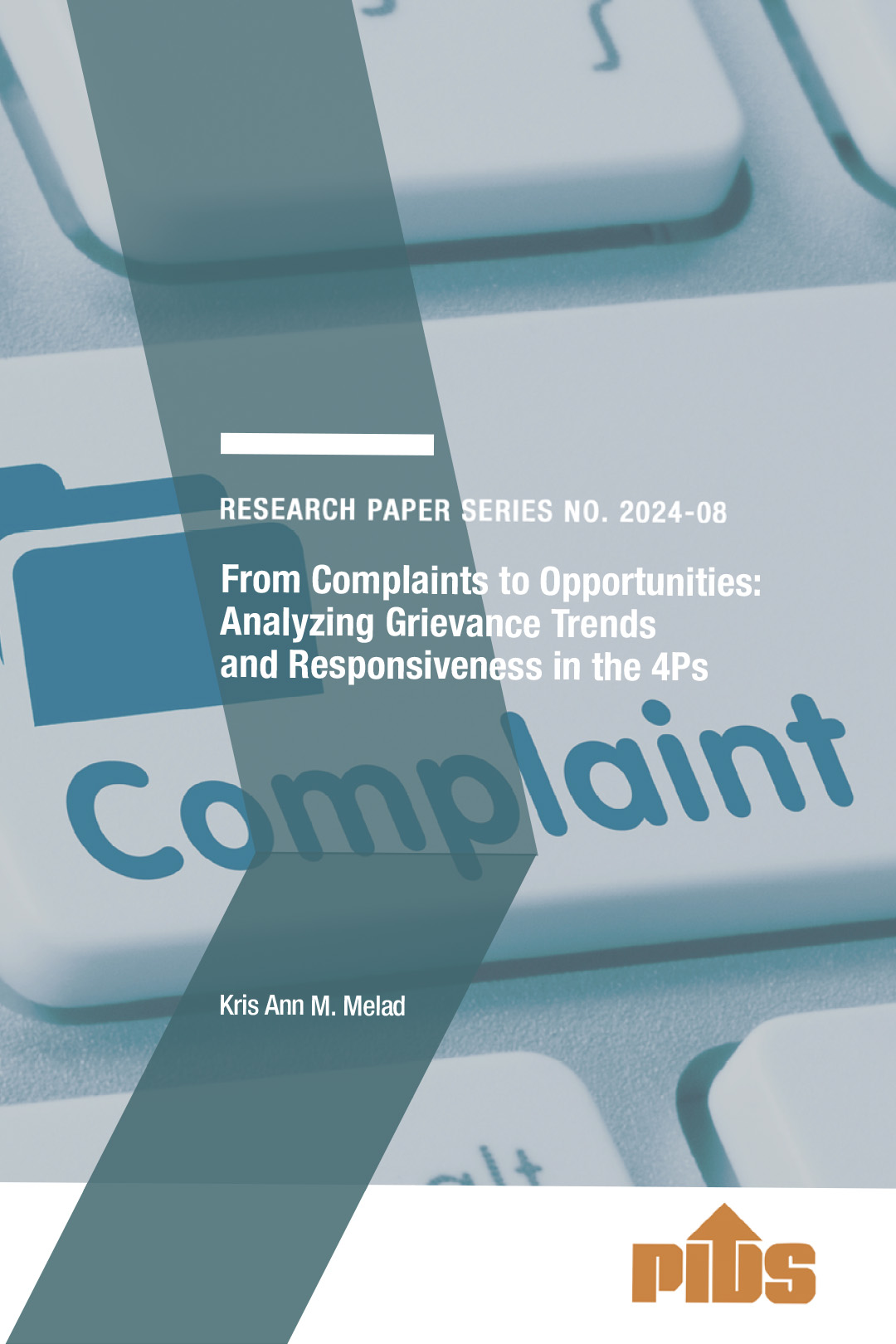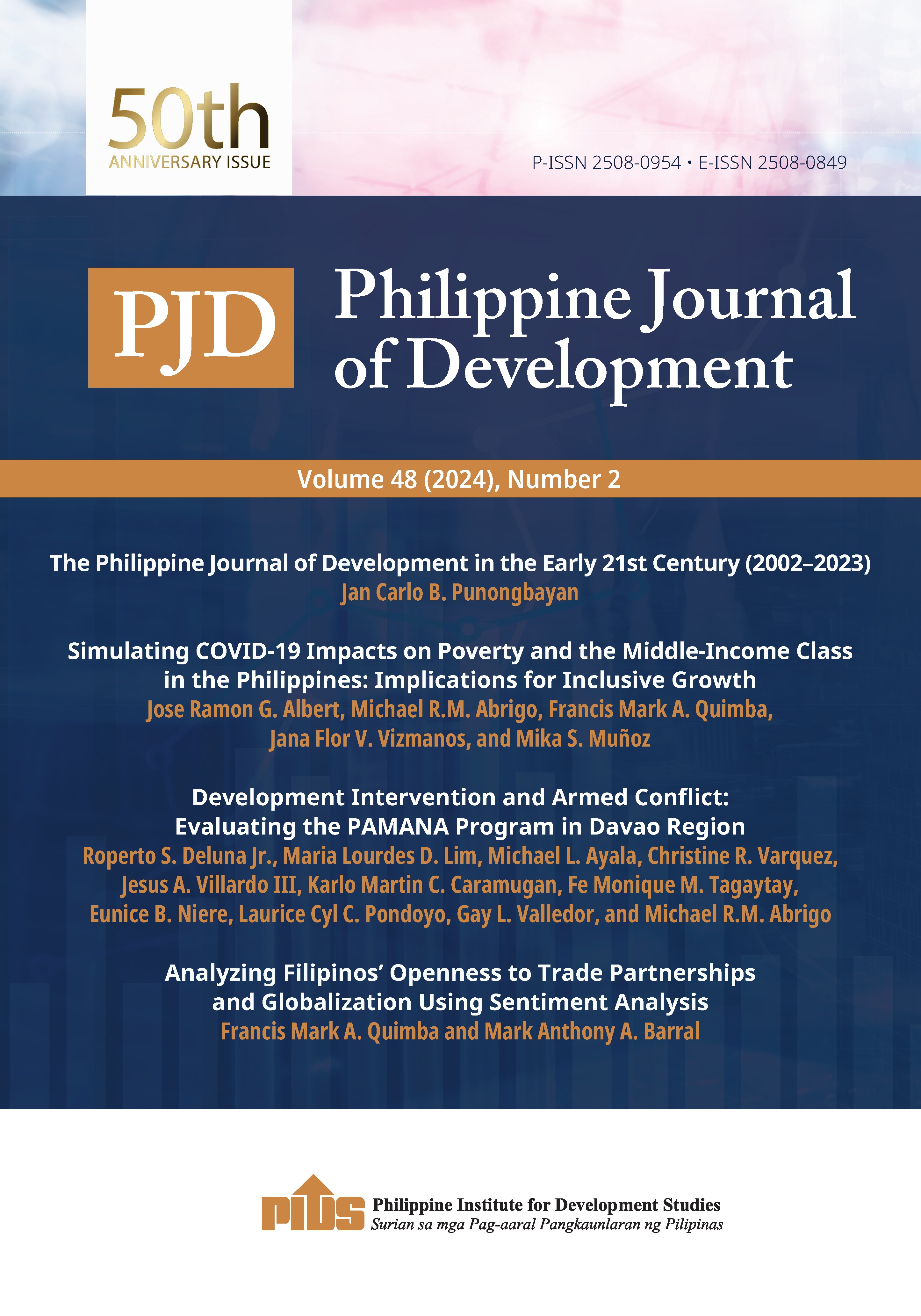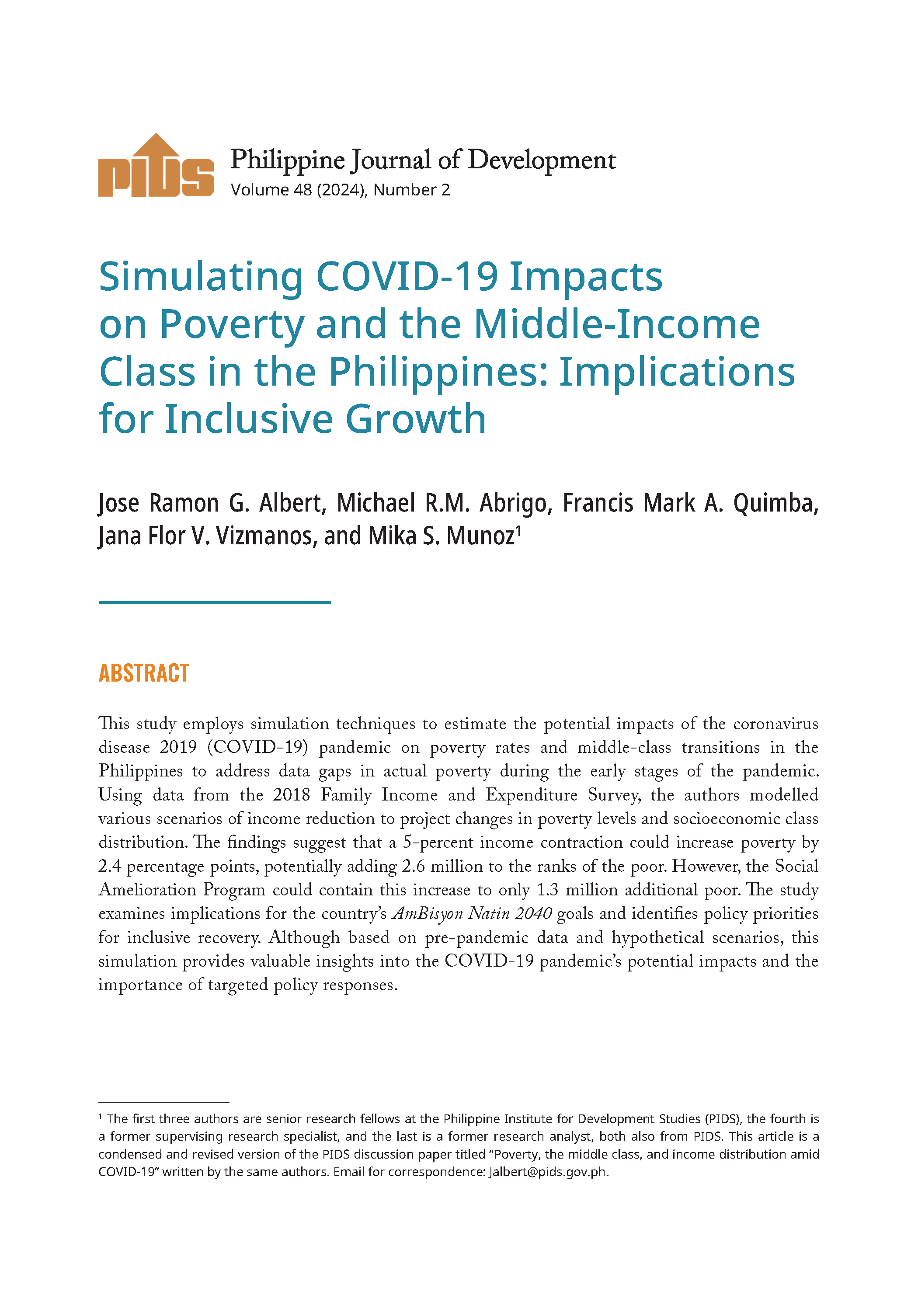The lack of access to transportation, decent employment and timely government intervention could send a lot of nonpoor households to poor status in three years, according to the Philippine Institute for Development Studies (PIDS). In a policy note, titled “Estimating Filipinos’ Vulnerability to Poverty”, PIDS supervising research specialist Christian D. Mina and senior research fellow Celia M. Reyes said four of 10 Filipino households are vulnerable to poverty.The authors added that around 47.6 percent of the vulnerable households were nonpoor in 2009, while 27 percent were also not poor between 2003 and 2009. This group also accounted for 23.2 percent of the total nonpoor households. Even if households were initially nonpoor, they tended to slip down into poverty if they did not have access to transport infrastructure and/or irrigation facilities, or had more members in vulnerable employment [e.g., self- employed; who are usually less educated and can easily accept casual wage jobs],” the authors said. The authors added 77.4 percent of poor households were classified as vulnerable. They said a household is considered vulnerable if its estimated vulnerability to poverty is below the vulnerability threshold. The majority of nonpoor but vulnerable households were predicted to be poor only in, at the most, two periods from 2010 to 2012, thus tagged as relatively vulnerable, and were more susceptible to idiosyncratic shocks. The study showed that vulnerable households were more susceptible to unobservable idiosyncratic shocks than covariate shocks.Idiosyncratic shocks include birth, injury or accident, serious illness, death, and job loss of a household head or member. Covariate shocks, meanwhile, include natural disasters, human or animal epidemic, economic crises, high unemployment rate and stock-market collapse, among others.Many of the households were more vulnerable to idiosyncratic shocks probably because of the latter’s direct and more specific impacts,” the PIDS researchers said.To address poverty issues, the authors urged the government to invest more in education. Some key strategies include stronger implementation of the grants-in-aid program of the Unified Student Financial Assistance System for Tertiary Education Act (an option to the Free Higher Education for All Act) and systematic monitoring and regular evaluation of the Pantawid Pamilyang Pilipino Program.They also want the government to improve the agricultural sector by developing agri-based industries to increase employment, providing support to high-value commodities and enhancing small farmers’ access to format credit.The authors also said there is a need to protect farmers against market risks, refine the design and implementation of the agricultural insurance programs and improve infrastructure, especially in rural agricultural areas.Mina and Reyes also advised the government to help Filipinos build resiliency in coping with shocks and to devise comprehensive strategies related to disaster- risk reduction, mitigation and management, including strengthening of early warning and forecasting systems.The authors also recommended for a stronger implementation of laws promoting entrepreneurship, such as the Go Negosyo Act, and the provision of technical and financial assistance to potential entrepreneurs, as well as financial-management education.
4 of 10 nonpoor Filipino households could slip into poverty in 3 years











